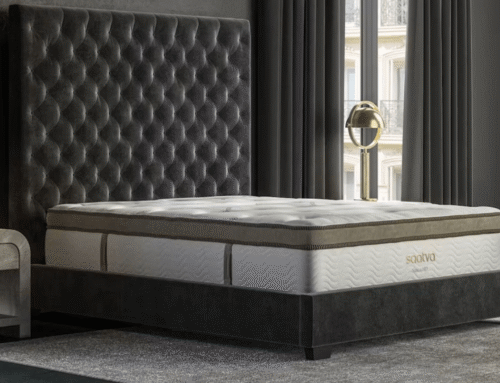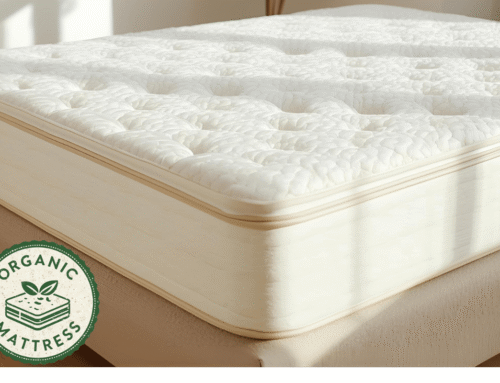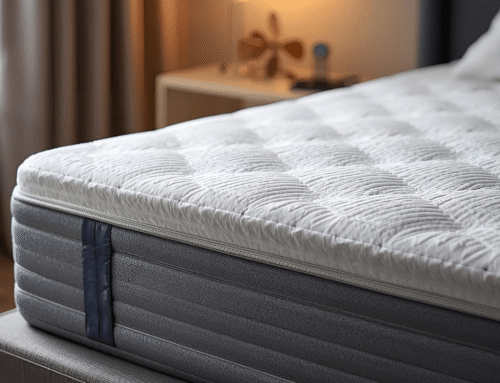Memory foam mattresses feel great at first. They are soft, cushy, and good for pressure points. However, some people find they sink more than expected. This can disrupt their sleep and cause stiffness in the morning. A mattress that feels too soft can be more annoying than comfortable, especially for those who need good support.
Some mattresses soften too much over time, especially with regular use or in warm conditions. Others feel squishy right away, which can surprise anyone looking for firm comfort. This means the mattress needs a few changes to improve the feel and restore support.
This guide offers practical ways to make a soft memory foam bed firmer. We will cover adjusting the foundation and adding the right toppers. Each tip is based on real experience and advice from trusted sources. We’ll guide you through every step to restore structure, relieve pressure, and help you sleep better.
But before exploring solutions, it’s useful to understand the basics of memory foam mattresses, including standard and gel types, the recommended thickness for proper support, and the usual price range.
Key Takeaways
- Adding a firm mattress topper, such as dense memory foam, natural latex, or high-resilience polyfoam, quickly boosts support and limits deep sinkage without the need to replace the bed.
- Switching to a solid foundation or placing plywood under the mattress creates a flatter, sturdier base, which prevents sagging and keeps memory foam responsive.
- Flipping or rotating the mattress spreads out wear, allows compressed areas to recover, and restores a more supportive feel without added expense.
- Lowering bedroom temperatures to 65–70°F or increasing airflow keeps memory foam firmer throughout the night, reducing the overly soft, “melt-in” sensation.
- If all adjustments fail and aches or sagging continue, the mattress should be replaced, preferably with a firmer memory foam or hybrid model for lasting support.
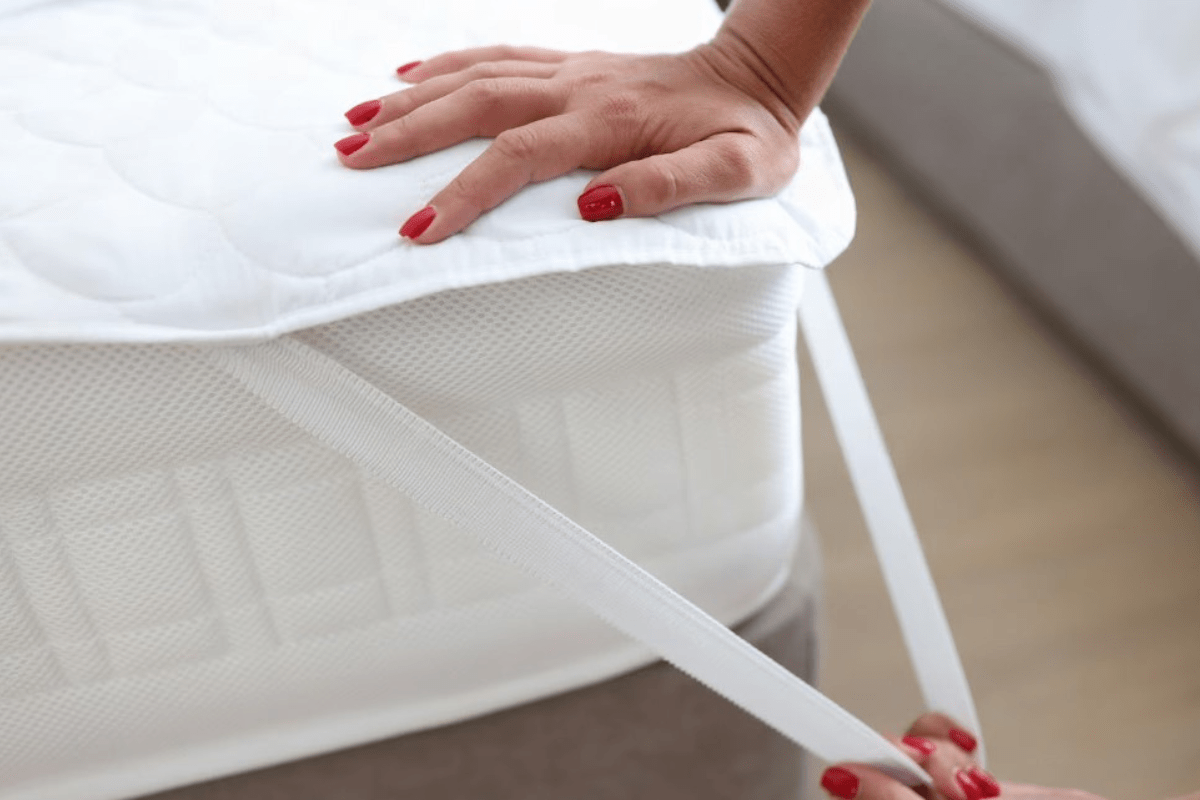
Adding a Firm Mattress Topper
A firm mattress topper provides an easy fix for those who want a stiffer sleep surface without replacing their mattress. People notice the difference right away since the added layer gives extra support that a soft mattress may lack. It’s a low-commitment option that doesn’t require much effort. It also comes in handy for uneven surfaces or sagging spots, and fixing dips in memory foam mattresses and restoring firmness without replacing the entire bed often begins with a well chosen topper.
Some go for dense memory foam to limit sinkage, while others prefer natural latex, which feels more responsive and firmer overall. High-resilience polyfoam is another choice, less contouring but sturdy enough for back or stomach sleepers. A thickness of 2 to 3 inches typically gives enough lift without feeling awkward.
Firmness ratings help narrow things down, especially those with an ILD of 30 or higher. Toppers like these balance cost and comfort, especially for those waking up with sore backs. Instead of replacing the mattress altogether, this route is more practical and less disruptive.
Solid Foundation or Plywood Board
A memory foam mattress performs best on a firm and flat surface. Placing it on widely spaced slats or an older box spring can cause it to dip or lose its shape over time. That uneven base might even trick someone into thinking the mattress has softened or worn out. One fix is to lay a ¾-inch thick plywood sheet between the mattress and the frame. That extra layer helps keep the mattress from sinking between slats and supports its overall structure.
A bunkie board or a solid platform frame works too and usually looks neater in the room. This kind of foundation change usually improves the mattress’s feel right away. Instead of soft spots or pressure dips, the surface stays consistent from edge to edge. It helps the foam stay responsive and better supports the spine during sleep.
Flipping or Rotating the Mattress
Some people notice their mattress feels too soft or uneven after a few months of use. Before replacing anything, flipping or rotating the mattress could help, if the design allows it. This simple step often refreshes the feel without spending more.
Double-sided mattresses, which have foam layers on both the top and bottom, can usually be flipped. Flipping lets the previously unused side support the body, helping the compressed areas recover and extending the mattress’s use. Not all memory foam beds have this feature, though.
For one-sided mattresses, rotating the bed 180 degrees may offer a similar benefit. Switching the head and foot positions helps spread out body pressure, especially for those who sleep in the same spot nightly. Over time, it encourages more even wear and may feel a bit more supportive again.
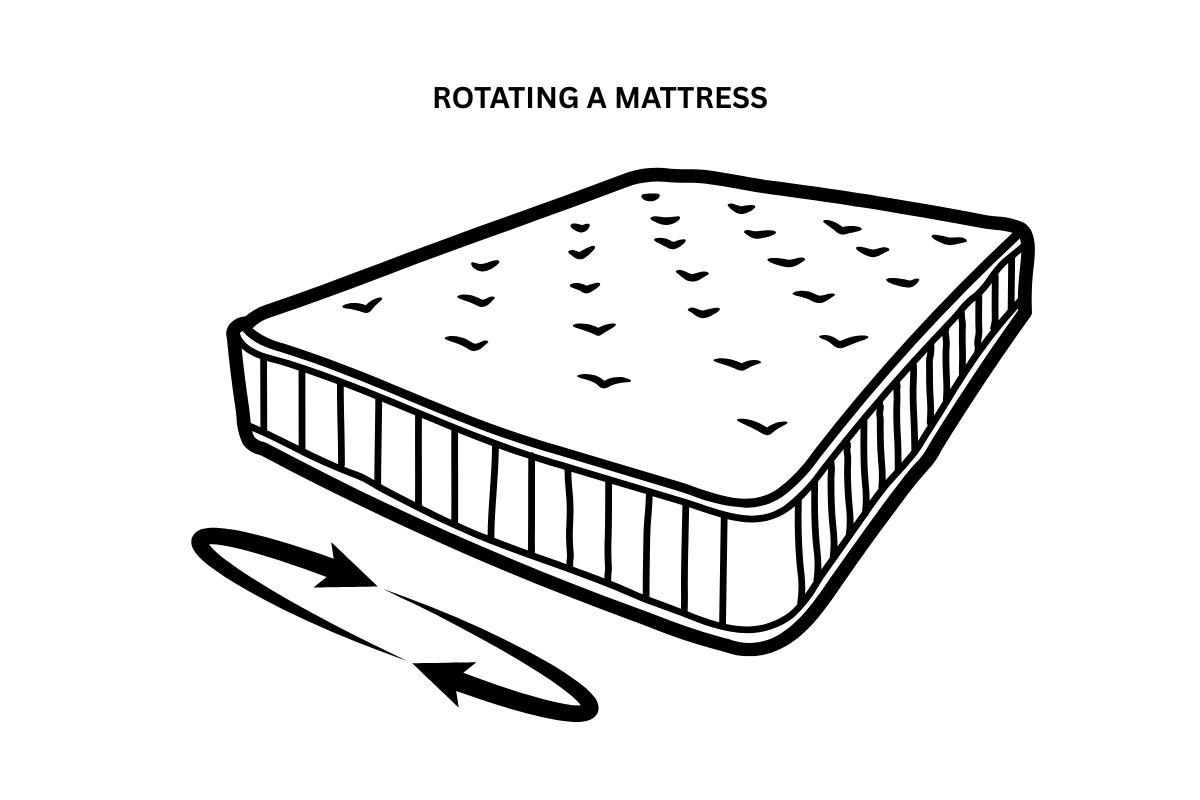
Cooling It Down
Cool rooms help memory foam feel more supportive. Some people notice their bed feels almost too soft during warm nights, especially in humid areas or homes without good airflow. That shift in feel usually surprises first-time memory foam users. The material responds to body heat and room temperature, so sleeping in a hot environment can make it feel too plush. On colder nights, though, it might feel stiffer or take longer to soften. That’s just how the foam works. It’s temperature-sensitive by design.
Lowering the thermostat to about 65–70°F usually helps stabilize the firmness. Others prefer adding a fan or running the A/C for better airflow around the bed. A cooler setup helps the mattress keep its shape and feel more consistent overnight, which is essential for making a memory foam mattress cooler and for allowing it to fully expand and settle during the first 48 hours of use.
Drying It Out
Too much moisture softens memory foam over time. In humid areas or after a spill, the mattress soaks up damp air or liquid, which affects how firm and supportive the foam feels. Many notice their bed feels too plush or uneven soon after exposure.
The usual fix calls for airing it out. Removing the sheets and placing the mattress near sunlight or a steady fan often helps dry it thoroughly. Some use baking soda, not only to absorb odors but also to draw out lingering moisture, and vacuum it after a full day. Proper care also involves drying memory foam mattress, getting urine out of it, removing stains from it easily, and cleaning it, all of which are essential steps to preserve mattress quality.
Keeping the surface dry preserves the original structure and feel. Those who dealt with damp mattresses report that even brief exposure to humidity causes a noticeable change in comfort. Regular ventilation or a dehumidifier nearby can help prevent these problems altogether.
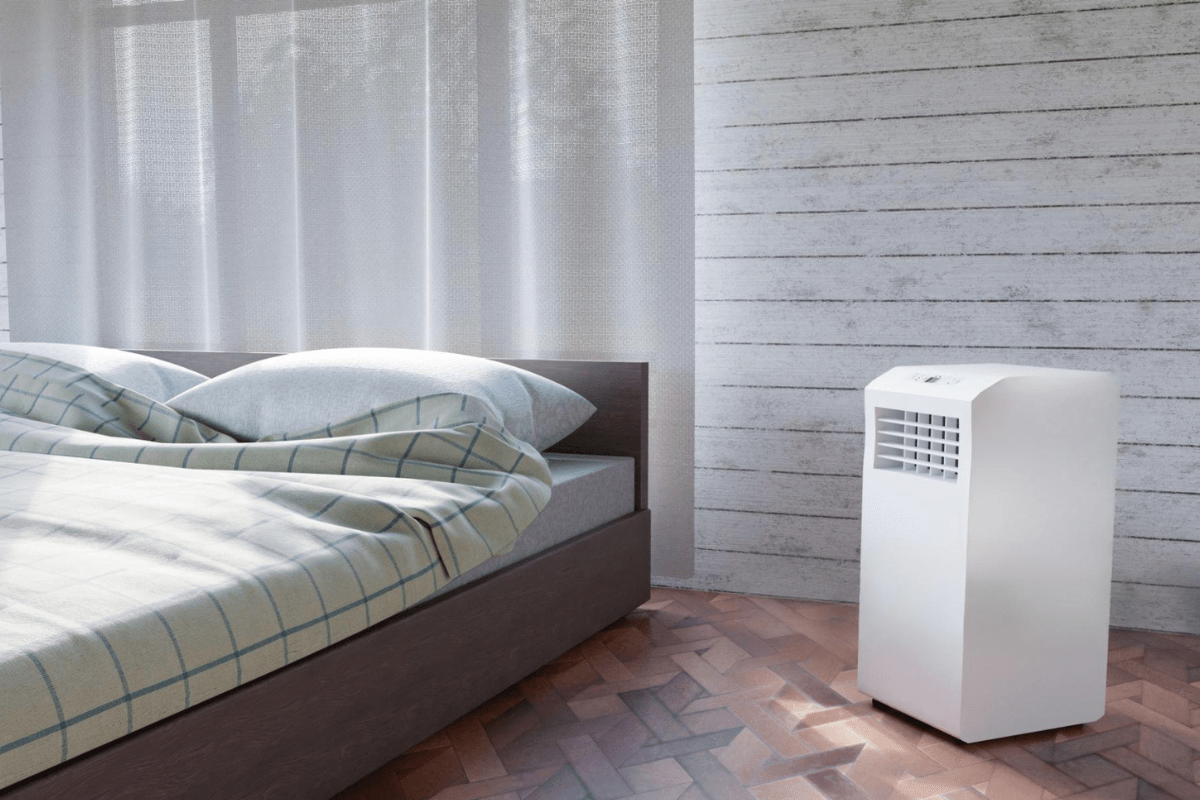
Mattress Age and Material Quality
The age and material quality of a memory foam mattress greatly affect how firm it feels. Older mattresses with worn-out foam lose their firmness because the core layers break down over time. When the base foam deteriorates, the mattress becomes softer and less supportive, which makes it difficult to restore firmness.
Low-density foam also contributes to this issue since it softens faster than higher-density options. Mattresses with base foam under 3.5 pounds per cubic foot start off firm but become less stable as the material ages. Understanding the typical lifespan of a memory foam mattress helps maintain comfort and support.
To improve firmness, considering the mattress’s condition and materials proves important. Adding a firm mattress topper or placing a plywood board underneath helps temporarily, but for lasting support, a mattress with fresh and higher-density foam usually offers the best solution.
Mattress Encasement or Tighter Fitted Sheet
Using a quality mattress encasement or a snug deep-pocket fitted sheet adds firmness to a memory foam mattress. Wrapping the mattress tightly compresses the foam enough to reduce some softness and improve overall support. This method does not provide a complete fix, but it works well with other adjustments.
Combining a mattress encasement with a firmer mattress topper or placing the mattress on a solid foundation improves the feeling of firmness. These small tweaks help prevent the foam from sinking too much, which often causes discomfort. Over time, the foam lasts longer when it is kept snug and supported.
Think of the encasement as a gentle squeeze that limits excessive stretching of the foam layers. It keeps the mattress feeling tighter and extends its comfort life. While it does not transform the mattress completely, it helps create a firmer sleep surface in a simple and practical way.
Test Mattress Firmness with a Trial Period
Testing mattress firmness during the trial period is useful when a memory foam mattress feels off. Many online brands provide return policies lasting from 90 to 365 nights, giving buyers ample time to decide if the firmness suits them. This trial window helps avoid committing to a bed that does not meet comfort needs. It is also important to allow the memory foam mattress time to expand and fully settle, as this affects when you can accurately judge its firmness during the trial period.
Some companies go further by allowing firmness adjustments, such as exchanging the mattress for a firmer or softer option or adding a topper to change the feel. These options help customize comfort without the hassle of returning the entire mattress. It pays to explore these possibilities before giving up on a purchase.
Asking about these services reveals helpful solutions not widely advertised. Exploring return and exchange policies offers a chance to find the right firmness or improve support on a memory foam mattress. This approach saves both time and money in the search for better sleep.

Know When It’s Time to Replace It
A mattress can lose its support over time, even after adding a topper, cooling the room, or reinforcing the foundation. When these adjustments fail to improve sleep quality, it might indicate the mattress no longer provides proper comfort. Foam materials gradually compress, and subtle changes go unnoticed until discomfort appears.
Waking up with stiffness, aches, or back pain are signs that the mattress no longer supports the body correctly. Feeling like the mattress sags or lets the sleeper sink too deeply points to foam breakdown. These signs suggest it is time to rethink the sleep setup and consider alternatives that better maintain firmness and alignment.
Choosing a firmer memory foam mattress or a hybrid model with zoned support provides a more consistent feel and targeted pressure relief. Such options provide durability and help prevent sinking, which is essential for healthier sleep posture. When it is time to replace your mattress, proper disposal of the memory foam mattress becomes necessary, and considering environmentally friendly methods helps manage the old mattress responsibly.
Final Thoughts
A mattress can feel firmer without needing to replace it. Using a solid and supportive base can reduce sinking, and adding a denser mattress topper provides extra firmness. Lowering the room temperature may also help since memory foam softens with heat.
New memory foam mattresses sometimes feel too soft at first, but that usually improves after a month or two of regular use. The foam fibers gradually adjust and become more supportive over time, so initial softness is not always a sign of poor quality.
Ultimately, comfort depends on balancing support and softness. Sleeping on a mattress that supports proper alignment while avoiding pressure points helps improve rest quality. Comfort preferences vary, so patience during the break-in period leads to better sleep experiences. Properly storing, compressing, and moving a memory foam mattress helps preserve its condition and makes handling easier.

